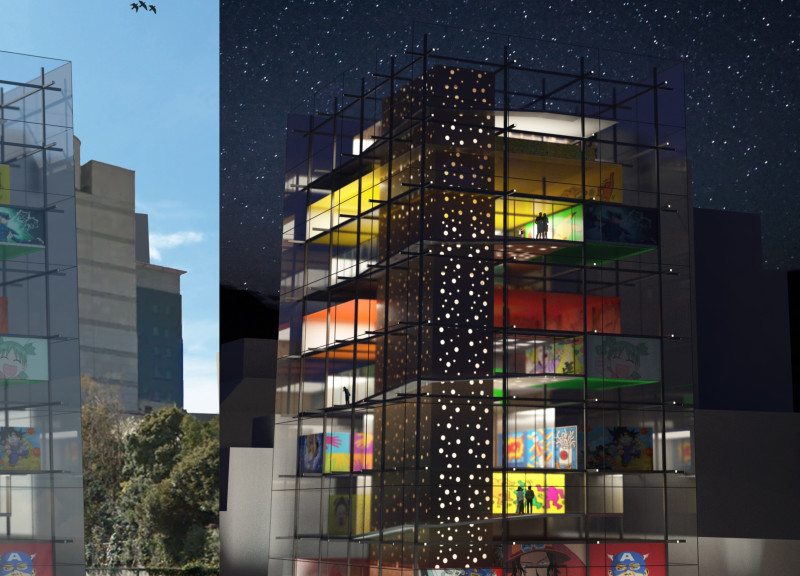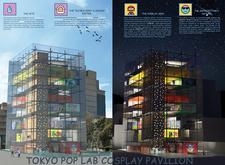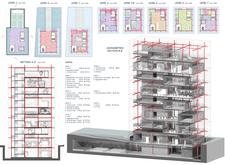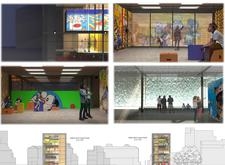5 key facts about this project
The architectural design of the pavilion utilizes a double-skin cladding system, which enhances energy efficiency while providing an interesting visual experience. This facade is adorned with vibrant artwork that resonates with anime and manga themes, attracting both residents and visitors. The dynamic interplay of colors and patterns contributes significantly to the architectural narrative, effectively bridging the gap between the building and its urban context. The use of glass in the facade allows for ample natural light throughout the interior, fostering an inviting atmosphere and establishing visual connections with the surrounding cityscape.
Functionally, the pavilion is organized into a series of overlapping blocks that create a varied spatial experience. The design encourages movement and interaction, with open circulation areas that promote engagement among users. Key components of the project include multifunctional spaces such as libraries, workshop areas, and exhibition galleries, which can adapt to various events or gatherings. These spaces are designed to accommodate both large and small groups, reinforcing the pavilion's role as an inclusive community center.
A notable aspect of the architectural design is the emphasis on sustainability. The materials selected for the pavilion are chosen not only for their aesthetic appeal but also for their environmental performance. The use of steel in the structural framework provides durability, while wood elements within the interiors add warmth, enhancing the overall user experience. The project utilizes modular construction techniques that prioritize efficiency and minimize waste, aligning with contemporary sustainability practices in architecture.
The Tokyo Pop Lab stands out through its unique approach to design, encapsulating the spirit of the cosplay culture while being mindful of its environmental impact. By integrating modern materials with a playful and engaging design language, it creates an environment conducive to creativity and social interaction. The architectural outcome is not just a building; it is a place where people can come together to celebrate their passions and creativity, fostering a sense of belonging within the community.
As you explore the Tokyo Pop Lab Cosplay Pavilion, consider reviewing the architectural plans, sections, and designs to gain a deeper understanding of this project. The intricacies of the design and its thoughtful integration with cultural elements underscore the importance of architecture that is both functional and representative of its community. Engaging with the details of the project will provide further insight into how architecture can celebrate and preserve cultural identity while creating spaces for collective experiences.


























